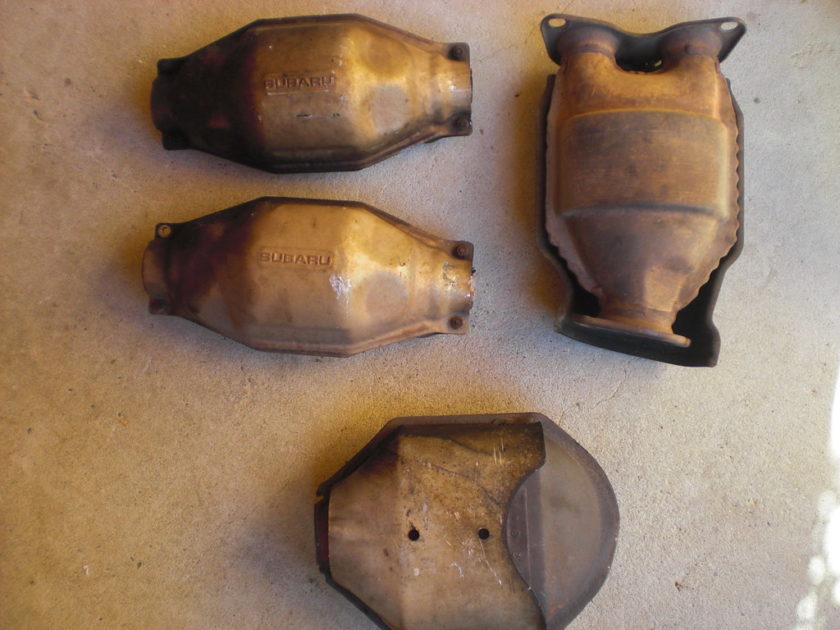People have been stealing cars, or at least parts of cars, since they were invented over 120 years ago.
Capital University was recently the site of several catalytic converter thefts between the hours of midnight and 5 a.m. on Friday, Feb. 11, 2022. The theft took place in the S1 and S2 parking lots on the east side of Pleasant Ridge Avenue, per the email from Capital Communications sent out later the same day.
“We received a call…that the car was making a loud noise when the student started it, we went over there and looked at the car and realized the catalytic converter was missing…we do not have a great picture of the suspects…[but,] there were two [suspects involved],” Sergeant Willy Zarate, Capital public safety officer, said.
Security surveillance video shows a black SUV, with both license plates removed, driving around the parking lot with a person getting out of the vehicle, crawling under several cars for about a minute, then getting out from underneath them holding a catalytic converter. The suspect then gets back in the dark SUV and drives to another car and repeats the process.

Zarate said, “We shared the information with other law enforcement agencies…seven cars in total [were hit that night].”
Catalytic converters have been a hot item among car thieves ever since they were required to be fitted to all production cars in the U.S. in 1975.
The reason catalytic converters are so sought after is because of what they are made of. On the outside, they just look like a metal tube, but on the inside, they are full of rare metals like palladium, platinum and rhodium laid out in a honeycomb structure inside the steel casing.

There are only a few grams of each of these metals inside the catalytic converter, but that is enough to make a new one worth several hundred dollars. These metals react with the environmentally harmful gasses produced by internal combustion engines, like carbon monoxide.
If a carbon monoxide molecule reacts with the metal insides of a catalytic converter, the oxygen will stick to the metal and be joined to hydrogen molecules to make water, or another carbon monoxide molecule to make carbon dioxide.
The leftover carbon will mix with other elements to form other less toxic gasses. This might not sound that much better, but at least it won’t eat a hole in the ozone layer.
A well-trained thief with the right tools who knows what they are doing can have a catalytic converter off in less than a minute and can, in theory, sell it to a scrap yard for a few hundred dollars. But it’s not that easy.
Scrap yards are aware that people like to steal these hunks of metal, so they may require proof of a serial number on the catalytic converter itself. Furthermore, they may also require you to have proof that it came off of your own car.
Some things you can do to help avoid being the victim of this crime is to park in a well-lit area or one with a lot of people. You can also buy aftermarket devices, essentially metal cages or shields, to cover the catalytic converter to make it harder to remove. The likelihood of getting hit with this crime also depends on what car you have; newer cars, SUVs, pickup trucks and hybrids are the most likely to be hit.
Efforts were made to reach out to victims of the crimes but no response was received.

